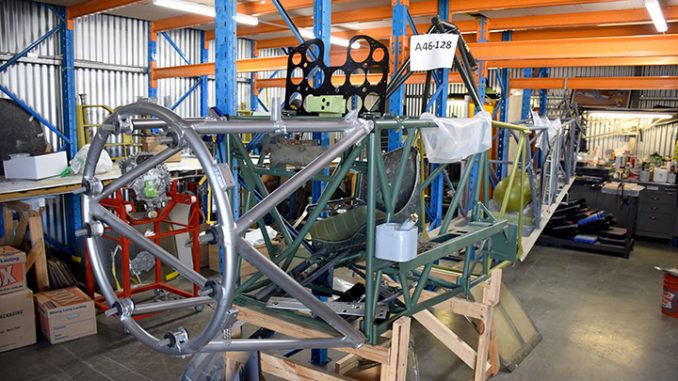
Once all-but extinct, the Commonwealth Aircraft Corporation (CAC) Boomerang is experiencing a healthy renaissance these days. More than a dozen examples of this pugnacious, Australian-designed and built WWII fighter aircraft are under active restoration, with a couple of them already back in the air again. The type can trace its roots to the North American NA-16, forebear of the T-6 Texan, which has been of considerable help in sourcing appropriate material for the resurrection of the type. Most of the current ‘survivors’ started out as little more than heavily stripped out wrecks recovered from farms, dumps or crash sites, and they have needed a considerable infusion of newly-built or New Old Stock parts to become viable restoration candidates. But this is the case for many WWII types that have begun to rebound in recent decades – the now-thriving populations of Hawker Hurricanes, Curtiss P-40 Warhawks and now de Havilland Mosquitoes are prime examples of what can happen when grit, cash and know-how are applied in sufficient quantity. And so it is with the Boomerang. We have followed a number of projects over the past few years, and are always interested in sharing new details when they emerge, which is why we were thrilled to see the latest report from our great friend John Parker at Warbirds Online concerning the Boomerangs at Ian Baker’s workshop near Sydney in New South Wales, Australia. John graciously allowed us to share his latest story (see below). We hope you enjoy reading it!
Since we last reported on Ian Baker’s CAC Boomerang restorations, he has made significant progress on several of the airframes – so much so with CA 13 A46-128, in fact, that it has now advanced to the point where it can now be placed on the market as a viable restoration project. Ian had only recently acquired this aircraft too, along with a large holding of Boomerang components, but since its arrival at his workshop, the Boomerang has undergone a marked transformation.
The forward fuselage frame has undergone a full structural examination, with repairs taking place where needed. Baker has accurately repainted the structure and re-installed some internal components, with additional fit-out to follow shortly. For example, the engine mount has been overhauled and refitted to the forward fuselage, while the fuselage fuel tank floor support has been restored and is ready to go back on the airframe. A main fuselage fuel tank is also now fully restored and ready for reinstallation, as are numerous components from the rest of the fuselage.
A46-128 is now an excellent basis for authentic restoration as it will contain a lot of original material specific to this aircraft and other Boomerangs, rather than new build components. Original CAC Boomerang material is exceedingly rare these days, so it is remarkable to have as much genuine material fitted to a restoration.
Even so, the project will use the centre section from a Canadian-built Harvard Mk.IVA. Due to the type’s similar heritage, it will be relatively straightforward to convert these components to full CAC Boomerang specifications. This a cost-effective move for the project, and the chosen pathway for many Boomerang restorations, as the end result will be almost indistinguishable from stock CAC Boomerang components. The fighter’s re-manufactured wooden monocoque is now ready for reattaching to the airframe, and is simply awaiting the completion of the fuselage fit-out for this to occur. The Boomerang’s outboard wing panels are currently under construction, while landing gear has been sourced and is undergoing overhaul. Additionally, a pilot’s seat has been obtained and will be refurbished in due course. All other components are either available or already rebuilt for fitting.
It is important to note that Ian Baker’s decision to sell this aircraft will allow a new owner to get in early enough to specify the precise finish they desire. The aircraft is available as-is, or for continued restoration in Ian’s shop to fly-away condition or any stage in between. An engine and propeller are available to potential customers, if needed. Ian estimates that he could have the fighter flying again in about three years, should a potential buyer wish him to continue with the project after purchase.
Regardless, this Boomerang represents a great opportunity to secure a historic, combat-veteran CAC Boomerang at a very reasonable price, lower than almost any other WWII fighter with a great Australian pedigree. Anyone interested in purchasing Boomerang CA 13 A46-128 should contact Ian Baker by email at [email protected].
History of CAC CA-13 Boomerang A46-128
CAC delivered this Boomerang, as construction number 951, to the RAAF in August, 1943. The fighter first arrived at No.1 Air Depot on August 25th, 1943. Two days later the Boomerang went to the SDU (Special Duties Flight) where she was supposed to take part in testing to determine in-flight cockpit carbon monoxide levels, however, these experiments were cancelled. The RAAF re-allocated the aircraft to No. 84 Squadron on September 11th, 1943. She arrived with the unit five days later, at a time when 84 Squadron was part of No 72 Wing, operating out of the Torres Straight at Horn Island.
Following 84 Squadron’s conversion to Kittyhawks on October 28th, A46-128 moved on to No. 5 Squadron, deploying to Piva Airfield at Torokina on Bougainville as part of No. 84 (Army Co-operation) Wing. The fighter stayed with this unit flying missions with RNZAF Corsairs, marking targets etc. Whilst with No.5 Squadron, the aircraft was frequently the mount of S/L Cook. She carried the fuselage code BF-N, and bore the name “U Beaut II” on the cowl, with nose art featuring a man in a tux riding on a broomstick! S/L Norman Steed Parry (291972) AFC wrote her off in a heavy landing at Piva North strip on March 12th, 1945. During this incident, the starboard tyre burst, swinging the aircraft to the left – heading her straight towards the Duty Pilot’s tower! To avoid the collision Parry lifted the aircraft back into the air, but didn’t have enough airspeed to do so safely. Consequently, the fighter slammed back onto the ground, collapsing the undercarriage and digging in the starboard wing, which precipitated a cartwheel. What remained following the crash landing was officially listed as ‘converted to components’ in April, 1945. Several decades after the war, a salvager recovered the fuselage from Piva and brought it back to Australia. The remains then passed through several other owners before arriving in Ian Bakers care. We hope to see her flying once more before too long!
Many thanks indeed to John Parker for permission to reprint this article. To see more of his reports, please do visit his excellent website Warbirds Online.
Related Articles
Richard Mallory Allnutt's aviation passion ignited at the 1974 Farnborough Airshow. Raised in 1970s Britain, he was immersed in WWII aviation lore. Moving to Washington DC, he frequented the Smithsonian’s National Air & Space Museum, meeting aviation legends.
After grad school, Richard worked for Lockheed-Martin but stayed devoted to aviation, volunteering at museums and honing his photography skills. In 2013, he became the founding editor of Warbirds News, now Vintage Aviation News. With around 800 articles written, he focuses on supporting grassroots aviation groups.
Richard values the connections made in the aviation community and is proud to help grow Vintage Aviation News.

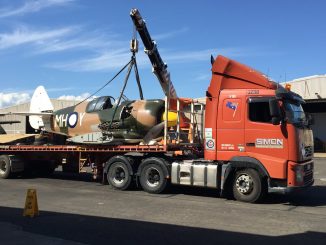
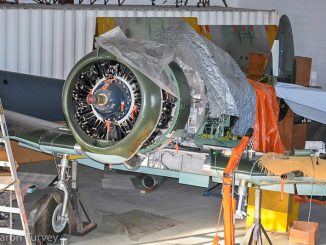
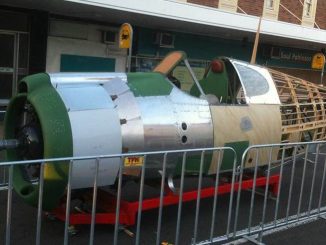
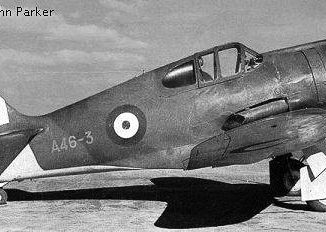
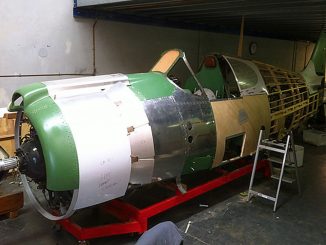
Be the first to comment
Graphic Design, Branding and Aviation Art